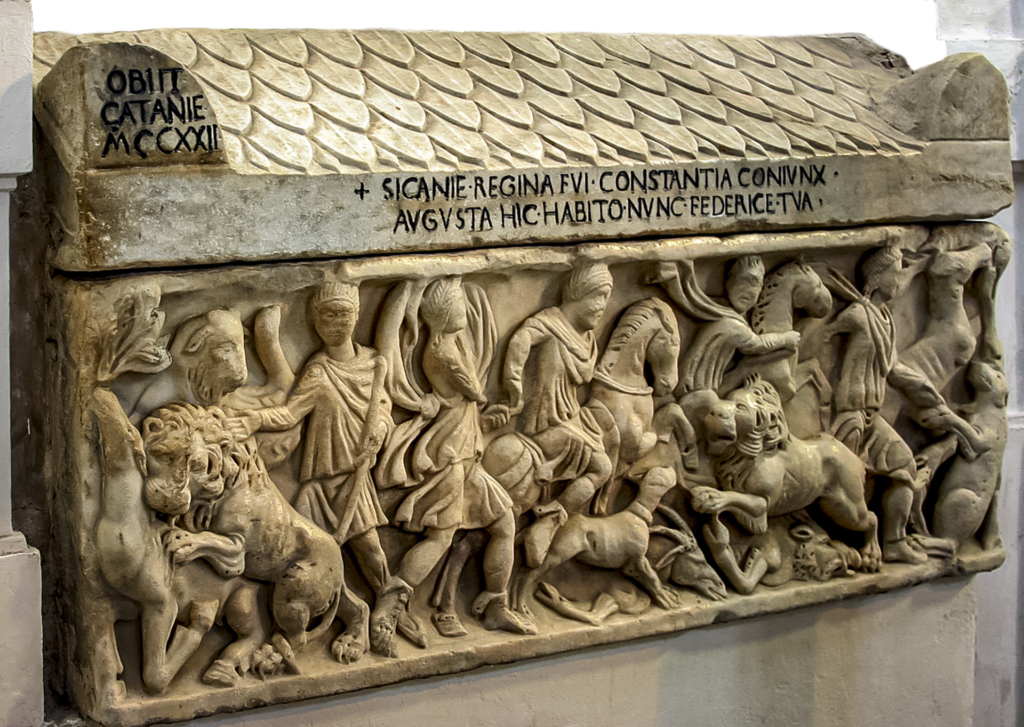Four sarcophagi are placed in corresponding areas of the chapel, that of Roger II and Constance of Hauteville in the background, the funerary monuments of Frederick II and Henry VI in the first position. The first King of Sicily rests in a sepulchre, with a rectangular case, covered with slabs of red porphyry with a sloping lid, supported by a sculptural group of four male figures. Queen and Empress
Constance of Hauteville
lies in a red porphyry sarcophagus, bearing the epitaph “Romanorum imperatrix, semper augusta et regina Siciliae“. Both sarcophagi are surmounted by marble canopies; those for Roger II and Constance of Hauteville are in white marble, supported by columns decorated with mosaics with geometric motifs, together with the entablature.
The two sarcophagi of Henry VI and Frederick II have grey marble and porphyry slab roofs, supported by six porphyry columns. The entablature of the canopy covering the emperor’s sarcophagus contains anthropomorphic protomes. The sarcophagus, which contains the remains of Frederick II, is decorated with very complex Islamic iconography. In fact, the similarity between the lions painted on the ceiling of the
Palatine Chapel
and those which are sculpted to support the sarcophagus can be seen. Other classical and Byzantine references, recurrent in Norman iconography, include the clipei on the lid with the Pantocrator, the Madonna and Child and the Symbols of the Evangelists. The iconography alludes to the triumph of imperial power while the lion-shaped supports echo the beasts depicted in the original Hauteville arms.
Frederick II’s first wife,
Constance of Aragon
rests in a late antique white marble sarcophagus, decorated with an exciting hunting scene, set into the right wall of the Chapel of the Royal Tombs. In the sarcophagus, covered with sloping roofs, there is the inscription “Sicanie regina fui Constantia coniux augusta hic habito nunc Federice tua”.
